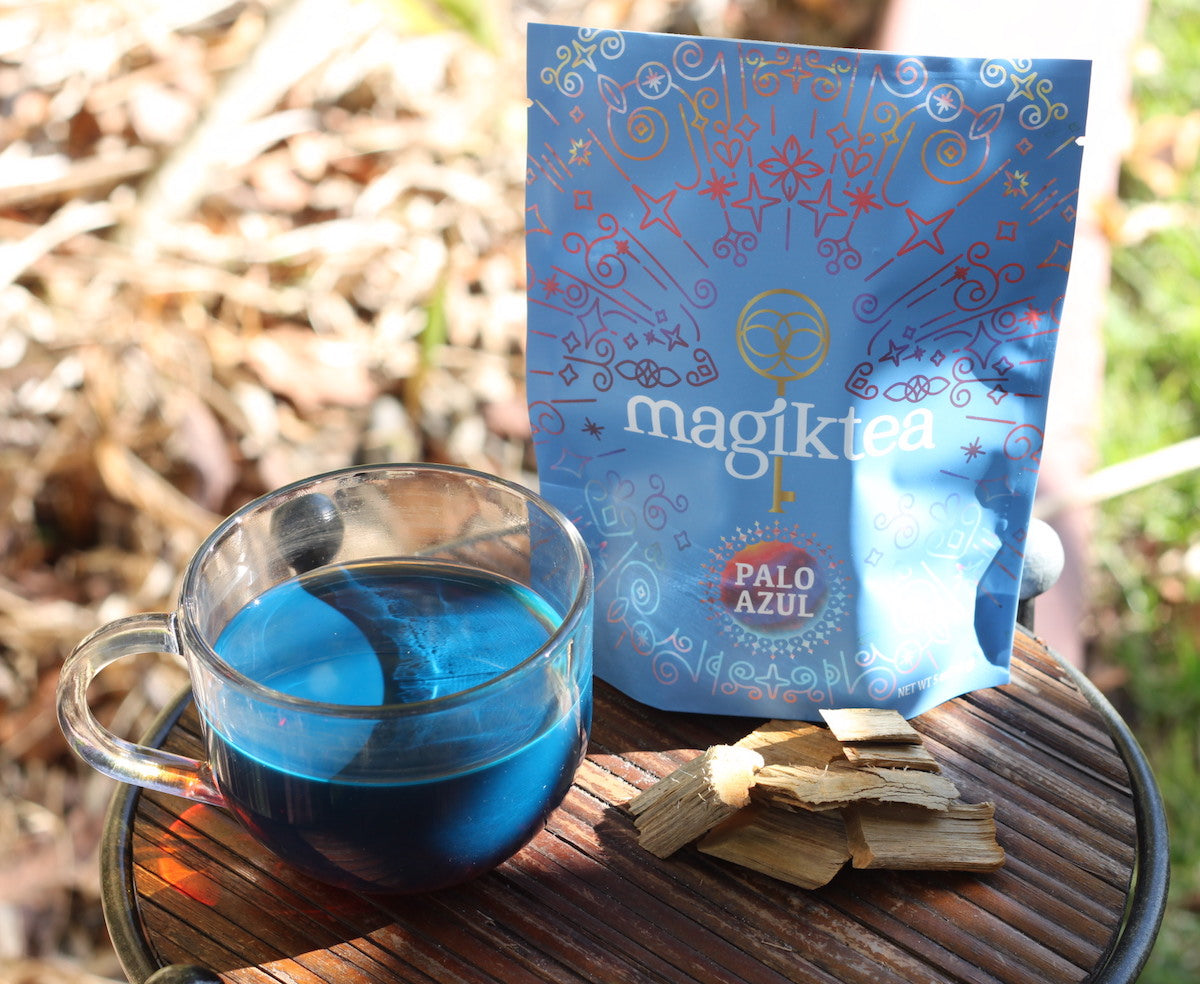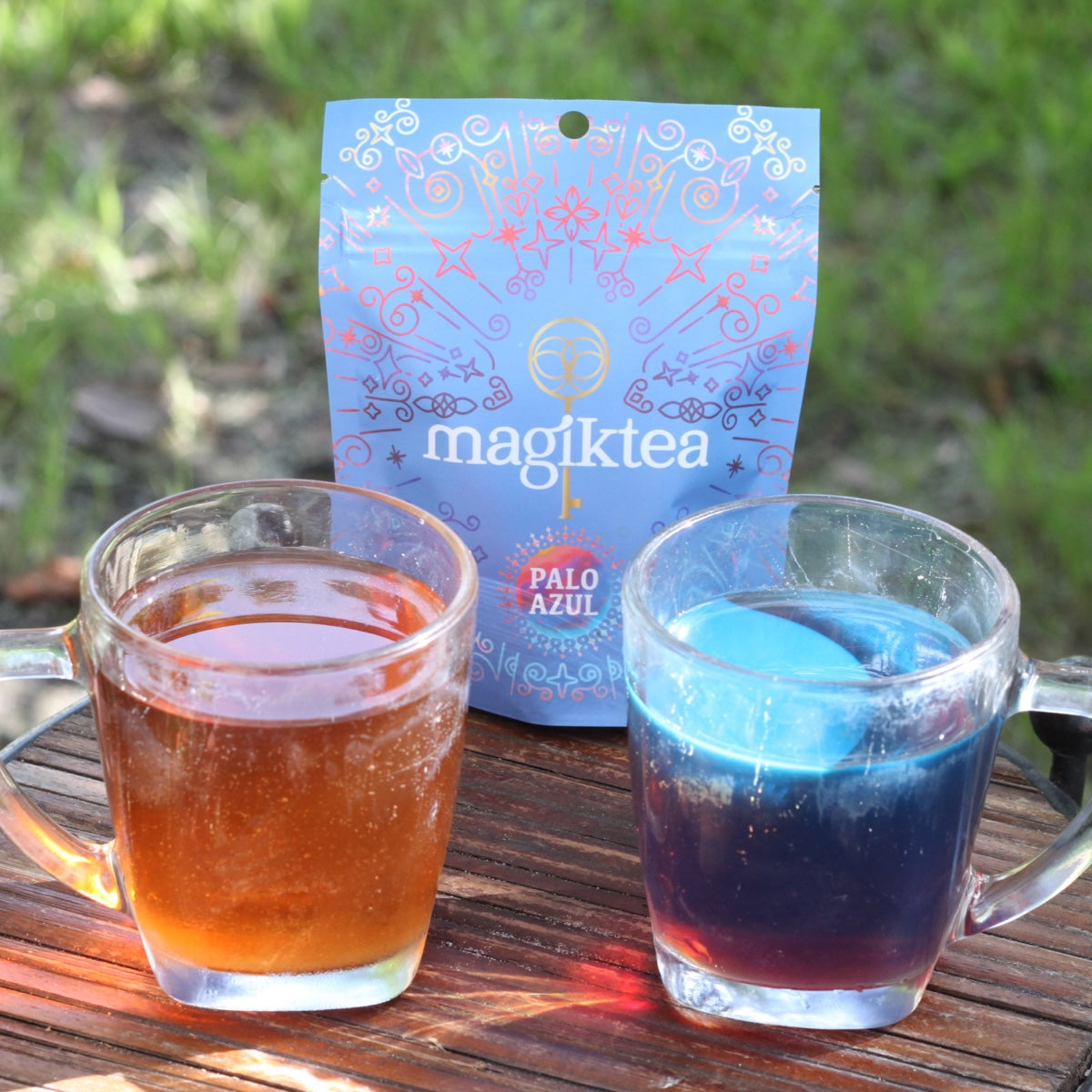If you live in Los Angeles, you’ve probably heard that you should wear an N95 mask and use an air purifier at home because the Air Quality Index doesn’t measure all the toxic chemicals in the air. Even with these precautionary measures, it is inevitable that we Angelinos will be breathing in a lot of harmful chemicals for some time. Fortunately for those looking for an extra line of defense, most of the damage caused by these toxins are mitigated by antioxidants and glutathione, both of which palo azul can help with.
What Toxins are Released by Wildfires?

According to detailed measurements obtained by the New York Times, the “atmospheric concentrations of lead, a neurotoxin, reached 100 times average levels even miles from the flames.” They explain that “lead is often present in paint and pipes used in older homes” and lead “can damage the brain and nervous system.” They also mention that “high levels of particle pollution in wildfire smoke have been linked to increased risk of cardiovascular and respiratory illnesses and death.”
According to NPR, “appliances, coolant fluid, polyester curtains, cleaning products” can all produce gases like “formaldehyde, and polycyclic aromatic hydrocarbons (PAHs).” They also mention that after the Lahaina wildfires in 2023, “residents exposed to smoke and ash experienced increases in heart, kidney, and mental health issues.” The CA Air Resources Board also mentions that particulate matter from smoke is so small that they can get into the lungs and pass directly into the bloodstream and this can “increase the risk of heart attack or stroke.”

This 2023 study found that “urban fires may emit numerous toxic species such as hydrogen cyanide, hydrogen fluoride, hydrogen chloride, isocyanates, polycyclic aromatic hydrocarbons (PAHs), dioxins and furans, and a range of toxic organic compounds (e.g. benzene toluene, xylenes, styrene, and formaldehyde) and metals (e.g. lead, chromium, cadmium, and arsenic).”
This ABC article mentions that “air quality indexes don't capture the presence of toxic particles such as asbestos and lead.”
This article also mentions that “many homes were built prior to 1970 and have lead, so there’s a lot of toxins and lead particles in the air from the burning paints and plastics.” They explain that “smoke can travel thousands of miles, degrading air quality” and this can spike hospital admissions for “respiratory distress, asthma attacks, heart attacks, and strokes. Longer-term issues include adverse pregnancy outcomes, lung disease, cancer, and asthma.”
How Can Palo Azul Combat Each of These Toxins?

Lead and other Heavy Metals
These (1, 2, 3, 4, 5, 6) studies have shown that palo azul has metal-chelating abilities, meaning that it is able to neutralize free radicals from toxic heavy metals and inhibit the oxidative stress and lipid peroxidation which is induced by heavy metals. This article goes deeper into all the studies on palo azul’s metal-chelating properties.
Formaldehyde

All these studies (1, 2, 3, 4) showed that palo azul increases the body’s endogenous antioxidant enzymes, which are known as glutathione, catalase, and superoxide dismutase. This study mentions that glutathione, catalase, and superoxide dismutase are the most important enzymes of the cell antioxidant defense system.
This 2013 study explains that there is a glutathione-dependent formaldehyde detoxification system which “confers protection against formaldehyde that is produced from environmental sources.” This study also showed that increasing the cellular concentrations of glutathione which is used to detoxify free radicals, was also protective against formaldehyde. This 2006 study also found that the detoxification of formaldehyde can be carried out by glutathione.
Polycyclic Aromatic Hydrocarbons (PAHs)
This 2018 study showed that glutathione plays a major role in the detoxification of reactive metabolites of PAHs. This 2006 similarly found that PAHs can be detoxified and metabolized by enzymes such as glutathione.
Asbestos

This study found that glutathione can “prevent some asbestos-induced biochemical events which subsequently may protect lungs against the development of pathological conditions. This 2021 revealed that glutathione had a protective effect against asbestos exposure.
This 1986 study explains that “asbestos-associated damage to cells of the respiratory tract in vitro can be prevented by the simultaneous addition of scavengers of active oxygen species to cultures.” One such scavenger is catalase, which the researchers conclude “can be pursued as a feasible approach to prevention of asbestosis.”
This 2009 study which corroborates these findings found that “administration of catalase prevented lung fibrosis in asbestos-exposed animals.” Moreover, this 2008 study concluded that superoxide dismutase “protects the lung from oxidant-induced damage, inflammation, and fibrosis in asbestosis.”
Cyanide
This 1990 study concluded that the addition of “glutathione protected against hepatic damage induced by cyanide. The protective effects of glutathione against hypoxic and cyanide-induced hepatotoxicity substantiate the role of oxidative stress in both types of injury.”
Dioxins

This 2002 study found that “dioxins cause an oxidative stress response in liver.” This 1998 study similarly demonstrated that “dioxin exposure does produce a sustained oxidative stress response.” Additionally, this 2000 study mentions that dioxins “induce oxidative stress”, which is the proposed mechanism of its cancer-promoting effects.
Fortunately for us, there are plenty of studies (1, 2, 3, 4, 5, 6, 7, 8, 9) which show that palo azul inhibits oxidative stress because it’s a powerful antioxidant with radical scavenging abilities.
Conclusion
In summary, urban fires can increase the amount of harmful particulate matter in the air which can penetrate into our lungs and bloodstream. Some of the worst offenders are lead, PAHs, formaldehyde, asbestos, cyanide and dioxins. Palo azul tea may help to mitigate the damage caused by these toxins because it is metal-chelating, inhibits oxidative stress, and it increases glutathione, catalase, and superoxide dismutase, all of which are shown to be protective against these toxins. We're praying for those affected and we hope everyone stays safe!
Sources
Airborne Lead and Chlorine Levels Soared as L.A. Wildfires Raged
Cleaning up after the LA wildfires is dangerous. Here's how to protect yourself
(2023) Hazardous air pollutant emissions estimates from wildfires in the wildland urban interface
CA Air Resources Board: Smoke Ready California
'It's not safe': As L.A.-area fires continue to smolder, experts warn of hidden dangers in the air
Los Angeles Wildfires Smother Region in ‘Hazardous’ Smoke
Role of Glutathione in Formaldehyde Metabolism and Toxicity
(2006) Molecular Basis of Formaldehyde Detoxification
(2021) The Role of Polymorphisms in Glutathione-related Genes in Asbestos-related Diseases
(2002) Dioxin increases reactive oxygen production in mouse liver mitochondria
(1998) Dioxin Causes a Sustained Oxidative Stress Response in the Mouse







